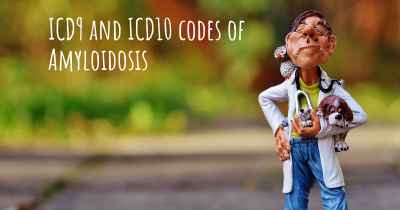What is the history of Amyloidosis?
When was Amyloidosis discovered? What is the story of this discovery? Was it coincidence or not?

Amyloidosis is a rare and complex group of diseases characterized by the abnormal accumulation of amyloid proteins in various organs and tissues of the body. The history of amyloidosis dates back to the early 19th century when the condition was first recognized and described by pathologists.
The term "amyloid" was coined by the German pathologist Rudolf Virchow in 1854 to describe the waxy appearance of the abnormal protein deposits he observed during autopsies. However, it wasn't until the late 19th and early 20th centuries that significant progress was made in understanding the nature of amyloidosis.
In 1877, the German pathologist Carl von Recklinghausen identified amyloid deposits in the liver and spleen of patients with a condition known as "waxy liver". This discovery laid the foundation for further research into the disease.
In 1930, the Swedish physician Oskar Westermark described the characteristic microscopic appearance of amyloid deposits in the blood vessels of patients with systemic amyloidosis. This finding, known as the "Westermark sign," became an important diagnostic tool for identifying amyloidosis.
Throughout the 20th century, researchers made significant strides in understanding the different types of amyloidosis and their underlying causes. In the 1950s, it was discovered that amyloidosis could be classified into primary (AL) and secondary (AA) forms. Primary amyloidosis is caused by the abnormal production of immunoglobulin light chains, while secondary amyloidosis is associated with chronic inflammatory conditions.
In the 1990s, the identification of specific genetic mutations led to the discovery of hereditary forms of amyloidosis. These include familial amyloid polyneuropathy (FAP), familial amyloid cardiomyopathy (FAC), and familial amyloidotic nephropathy (FAN). Each of these forms is associated with a different mutated protein.
Advancements in imaging techniques, such as positron emission tomography (PET) scans, have also contributed to the diagnosis and monitoring of amyloidosis. These imaging modalities allow for the visualization of amyloid deposits in various organs, aiding in the assessment of disease progression and treatment response.
Today, the treatment of amyloidosis depends on the specific type and extent of organ involvement. Therapeutic options range from chemotherapy and stem cell transplantation for primary amyloidosis to addressing the underlying inflammatory condition in secondary amyloidosis. Research into novel therapies, including targeted drugs and gene therapies, is ongoing.
In conclusion, the history of amyloidosis spans over a century of scientific discovery and medical advancements. From the initial recognition of abnormal protein deposits to the classification of different types and the development of diagnostic tools, our understanding of amyloidosis has come a long way. While it remains a challenging and often life-threatening condition, ongoing research offers hope for improved treatments and outcomes for those affected by this complex disease.
Improper degradation
Mislocalisation
Dominant-negative mutations
Structural alterations establish novel toxic functions
Amyloid accumulation
Posted Jul 11, 2019 by ESPERARE
Posted Jun 3, 2017 by Nancy 2000
Posted Jul 19, 2017 by Phyllis 2000
Posted Nov 14, 2019 by Linda 200








